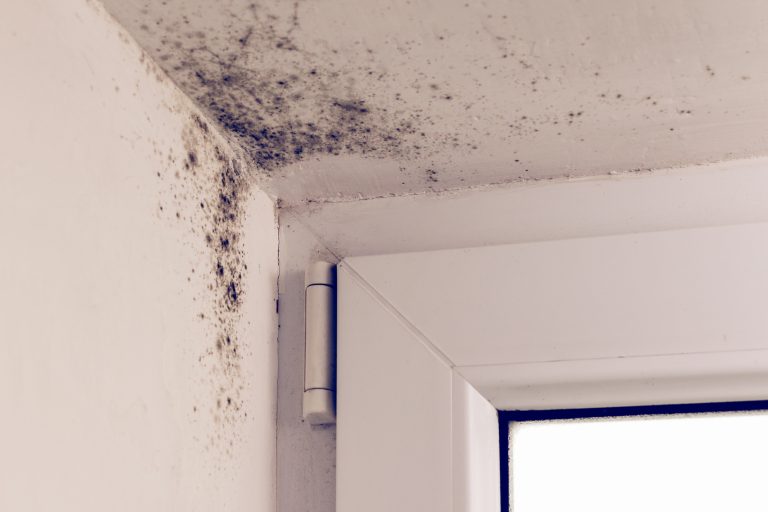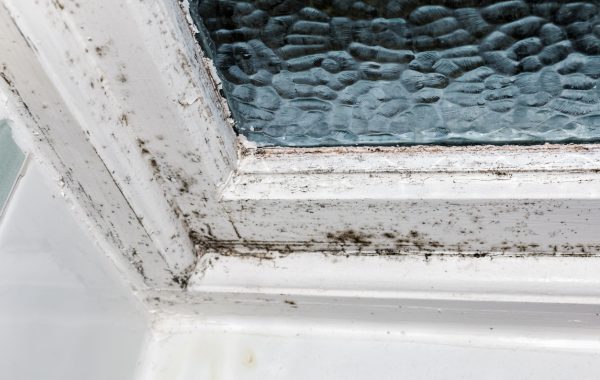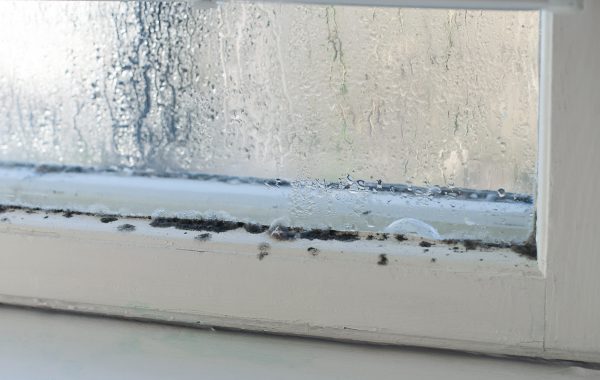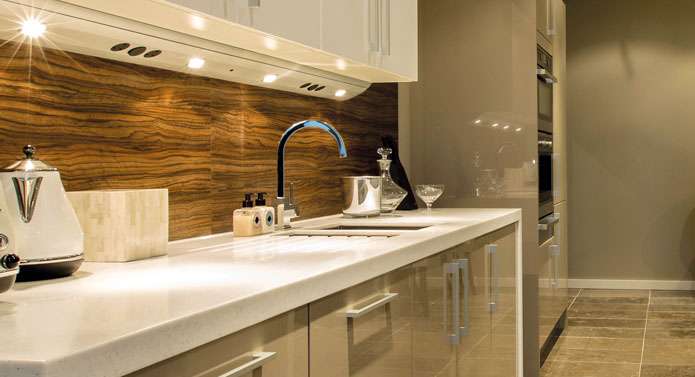Damp in Edinburgh Properties

Damp is often not damp. It’s condensation.
At HomeForce we are often contacted about “damp” in Edinburgh properties. However, more often than not, the issue is actually one of heating and ventilation. Not a damp issue at all.
This issue is most frequently seen in rented properties and relates to “damp” in bedrooms and bathrooms. The number of calls we get for this issue increases as the weather turns cold.
In this article we explain why, most of the time, the issue is not “damp” and what can be done to prevent it.
What is “damp”?
The “damp” HomeForce is most often contacted about manifests itself as discolouration or black mouldy areas on walls or ceilings.
In bathrooms this often appears in showers, on ceilings or above windows. In bedrooms “damp” will appear behind furniture (particularly if it is against an outside / external wall) or below windows.
These damp patches are caused by warm, moisture laden air meeting a cold surface (often an exterior wall) where the water in the air condenses. Without suitable air circulation (ventilation) the wet air doesn’t dry and, over time, discolours the surface it condenses on.
Left unchecked it can lead to wet rot as well as creating an unhealthy living environment.
Why does it happen?
There are two main reasons why this happens and why it happens particularly in colder months:
- In warmer months people are generally happy to have windows and doors open. This allows air to circulate and dry out any areas where “damp” may appear. During colder months people tend to keep all doors and windows closed reducing or preventing air circulation.
- Winter months also mean that the difference between inside and outside temperatures is greater. The temperature of external walls therefore is significantly lower than the air temperature inside. Ideal conditions for moisture in warm air to condense on cold outer / external walls.
Why Bedrooms & Bathrooms?
These are the places where there is most likely to be warm moist air meeting cold surfaces.
- In bathrooms this is because of the steam given off by having a shower and because tiles, being “stone like” (or, in fact, stone) cool more rapidly than, say, plaster.
- In bedrooms moisture in the air comes mostly from the simple act of breathing when sleeping. Think of how your breath can be seen outside on a cold day, that’s moisture in warm air condensing in cold air.
During winter people sleep with bedroom doors and windows closed. When the heating goes off at night (as it is timed to do in many properties) then the moist air breathed out is relatively more warm than the air of the room and so the water vapour condenses more readily on the cold surface it lands on. An example of this is the condensation you will see on a window in the morning when you open your curtains. That condensation, for the most part, is water vapour breathed out as you sleep at night.
The other room of the house that often has a lot of moisture in the air is the kitchen. However, in a kitchen there are factors that prevent “damp” appearing so often:
- The installation and use of extractor hoods
- Opening windows to remove food smells
- People are warmer as they are a) moving about while cooking and b) have a hob or oven heating the room so they will more readily open a window or door.
How can “damp” be prevented?
For landlords (and anyone really) the answer is in the Scottish Government’s Private Residential Tenancy Agreement in clause 17 which says that tenants must “keep the Let Property adequately ventilated and heated;”.
What does this mean in practical terms?
- In bathrooms:
- Ensure there is a good extractor fan that runs either on an extended timer or on a humidistat switch i.e. it doesn’t rely on someone to switch it on or doesn’t switch off as soon as the light get’s switched off.
- Keep a window open while having a shower and leave it open (wide open) for a few minutes immediately after the shower.
- In bedrooms:
- Sleep with a window slightly open.
- Leave the bedroom door open or at least ajar – just to help with air circulation.
- Move furniture slightly away from external walls (1 – 2cms is enough)
- In the morning open the windows wide for 10 – 20 mins (while showering or having breakfast)
- In general:
- Properly heat the property. It’s counter-intuitive to have heating on and windows open but without an air circulation system it’s the best way to ensure good air circulation (ventilation) in a property.


How can Landlords enforce this?
As mentioned at the start of this article most frequently HomeForce is asked about the issue of “damp” in rented properties. So how can landlords ensure it doesn’t become an issue?
- First it is important to recognise that landlords do have a responsibility to provide the means to enable tenants to properly heat and ventilate properties
- Fit good extractor fans in bathrooms and ensure they vent to the outside world
- Ensure windows can be opened (aren’t painted shut)
- Perhaps fit trickle vents in windows
- Ensure the heating system works as efficiently as possible (so doesn’t cost tenants lots of money to run)
- Draw attention to the relevant clause in the Private Residential Tenancy Agreement (Probably Clause 17) and make tenants aware that they may be liable for “Making good” if they do not “keep the Let Property adequately ventilated and heated”. The Private Residential Tenancy Agreement also allows for additional clauses to be added to strengthen the condition’s
- Add it as a term in the Deposit Certificate Document 42f.
- When lodging a deposit with an approved deposit protection scheme it is a requirement that Document 42f is used to notify tenants circumstances in which all or part of the tenancy deposit may be retained.
- Use this document to reinforce the need to adequately heat and ventilate the property.
- Provide full details of how a tenant should adequately heat and ventilate the property at the start of the tenancy.
What else can be done?
There are larger scale works that can be done to a property to help prevent the damp build up. These are relatively expensive projects to undertake.
- Install an air circulation system (Sometimes called Positive Pressure Mechanical Ventilation).
- Improve wall insulation on outer / external walls.
- Install trickle vents in older windows that lack them.
These options have pros and con’s and are subjects too large for the scope of this article.
What if there really is a “damp” issue?
The most common “real” damp (or water) issues that we, at HomeForce, come across are:
- Roof leaks
- Leaks from one part of a house to another or to another property (shower leaks, pipe leaks etc)
- Over flowing gutters or cracked downpipes
- Water penetrating brick work, pointing or render
- Compromised Damp Proof Course. (Most often due to external works leading to the ground being raised above a damp proof course).
Explaining these issues further is again beyond the scope of this article but each would require a specialist tradesperson / contractor to rectify. Which HomeForce would be happy to provide.
If you do require a tradesperson to:
- Make good “damp” / water damaged ceilings & walls
- Check for leaks (roof or pipe work)
- Clear or repair gutters
- Reinstate a damp proof course
- Damp proof a cellar
Then:
- Complete our tradesperson booking form
- Tel: – 0131 315 0000
- Email: – info@homeforce.com



